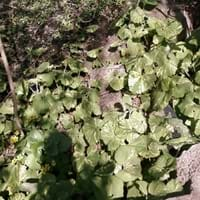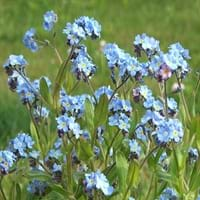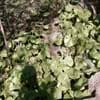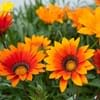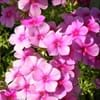Life Span
Perennial
Biennial
Type
Herbs
Flowering Plants, Herbs
Origin
China, Japan, Korea
Europe
Types
Not Available
not available
Habitat
gardens, Grassland, Homesteads, Open areas
Fields, meadows, rocky outcrops, waste ground
USDA Hardiness Zone
5-9
5-9
Sunset Zone
2a, 2b, 3a, 3b, 4, 5, 6, 7, 8, 9, 10, 14, 15, 16, 17, 18, 19, 20, 21, 22, 23, 24
21,22
Habit
Clump-Forming
Cushion/Mound-forming
Flower Color
Light Yellow, Ivory
Blue
Flower Color Modifier
Bicolor
Bicolor
Fruit Color
Not Available
Brown
Leaf Color in Spring
Green, Light Green, Light Yellow, Ivory
Gray Green
Leaf Color in Summer
Green, Light Yellow, Ivory
Gray Green
Leaf Color in Fall
Green, Light Yellow, Ivory
Gray Green
Leaf Color in Winter
Not Available
Light Green
Leaf Shape
Round
Lanceolate
Plant Season
Spring, Summer, Fall
Spring, Summer
Sunlight
Partial shade, Full Shade
Full Sun, Partial Sun
Type of Soil
Clay, Loam, Sand
Clay, Loam
The pH of Soil
Acidic, Neutral, Alkaline
Acidic, Neutral
Soil Drainage
Poorly Drained
Average
Bloom Time
Early Spring, Late Winter
Spring, Late Spring, Early Summer
Tolerances
Wet Site
Wet Site
Where to Plant?
Ground, Pot
Ground
How to Plant?
Divison, Stem Planting
Seedlings
Plant Maintenance
Medium
Medium
Watering Requirements
Allow soil to be completely dry in between waterings, Keep ground moist, Needs 2-3 times watering per week, Over-head watering, Requires watering in the growing season
Keep the Soil well drained, Requires a lot of watering
In Summer
Lots of watering
Lots of watering
In Spring
Moderate
Moderate
In Winter
Average Water
Average Water
Soil pH
Acidic, Neutral, Alkaline
Acidic, Neutral
Soil Type
Clay, Loam, Sand
Clay, Loam
Soil Drainage Capacity
Poorly Drained
Average
Sun Exposure
Partial shade, Full Shade
Full Sun, Partial Sun
Pruning
Remove deadheads, Requires very little pruning, Shape and thin as needed
Remove damaged leaves, Remove dead branches, Remove dead leaves
Fertilizers
All-Purpose Liquid Fertilizer
All-Purpose Liquid Fertilizer
Pests and Diseases
Pests and diseases free, Red blotch
Pests and diseases free
Plant Tolerance
Wet Site
Wet Site
Flower Petal Number
Not Available
Single
Foliage Texture
Bold
Medium
Foliage Sheen
Glossy
Matte
Attracts
Not Available
Butterflies, Insects
Allergy
no allergic reactions
Itchiness, Nausea, Throat itching, Toxic if not prepared properly
Aesthetic Uses
Showy Purposes
Beautification, Decorating walls, Showy Purposes, Used for decorating walls, fences, gates, hedges, etc.
Beauty Benefits
Not Available
Not Available
Environmental Uses
Air purification
Air purification, Food for animals, Food for birds
Medicinal Uses
No Medicinal Use
anti-inflammatory, Asthma, Eczema, Expectorant, Kidney problems, Liver problems, tuberculosis, Wounds
Part of Plant Used
Whole plant
Whole plant
Other Uses
Not Available
As a tea substitute, Basketary, Beneficial species for attracting pollinators, Traditional medicine, Use in Chinese herbology
Used As Indoor Plant
Yes
Insignificant
Used As Outdoor Plant
Yes
Yes
Garden Design
Bog Garden, Container, Feature Plant, Water Gardens
Bedding Plant, Bog Garden, Mixed Border
Botanical Name
PETASITES japonicus 'Variegatus'
Myosotis Arvensis
Common Name
Giant Butterbur, Japanese Butterbur, Variegated Butterbur
Field Forget-me-not,common forget-me-not, blue mouse-ear, scorpion grass
In Hindi
variegated butterbur
Field Forget-me-not
In German
bunte Pestwurz
Acker-Vergissmeinnicht
In French
pétasite panachée
Field Forget-me-not
In Spanish
butterbur abigarrado
Myosotis arvensis
In Greek
διαφοροποιημένα butterbur
Field Forget-me-not
In Portuguese
butterbur variegada
Myosotis arvensis
In Polish
barwny Lepiężnik
Niezapominajka polna
In Latin
varius butterbur
Field Forget-me-not
Phylum
Not Available
Tracheophyta
Class
Not Available
Magnoliopsida
Order
Asterales
Boraginales
Family
Asteraceae
Boraginaceae
Clade
Angiosperms, Asterids, Eudicots
Angiosperms, Asterids, Eudicots
Tribe
Senecioneae
Not Available
Subfamily
Not Available
Boraginoideae
Season and Care of Variegated Butterbur and Myosotis Arvensis
Season and care of Variegated Butterbur and Myosotis Arvensis is important to know. While considering everything about Variegated Butterbur and Myosotis Arvensis Care, growing season is an essential factor. Variegated Butterbur season is Spring, Summer and Fall and Myosotis Arvensis season is Spring, Summer and Fall. The type of soil for Variegated Butterbur is Clay, Loam, Sand and for Myosotis Arvensis is Clay, Loam while the PH of soil for Variegated Butterbur is Acidic, Neutral, Alkaline and for Myosotis Arvensis is Acidic, Neutral.
Variegated Butterbur and Myosotis Arvensis Physical Information
Variegated Butterbur and Myosotis Arvensis physical information is very important for comparison. Variegated Butterbur height is 60.00 cm and width 120.00 cm whereas Myosotis Arvensis height is 15.20 cm and width 10.20 cm. The color specification of Variegated Butterbur and Myosotis Arvensis are as follows:
Variegated Butterbur flower color: Light Yellow and Ivory
Variegated Butterbur leaf color: Green, Light Green, Light Yellow and Ivory
Myosotis Arvensis flower color: Blue
- Myosotis Arvensis leaf color: Gray Green
Care of Variegated Butterbur and Myosotis Arvensis
Care of Variegated Butterbur and Myosotis Arvensis include pruning, fertilizers, watering etc. Variegated Butterbur pruning is done Remove deadheads, Requires very little pruning and Shape and thin as needed and Myosotis Arvensis pruning is done Remove damaged leaves, Remove dead branches and Remove dead leaves. In summer Variegated Butterbur needs Lots of watering and in winter, it needs Average Water. Whereas, in summer Myosotis Arvensis needs Lots of watering and in winter, it needs Average Water.
